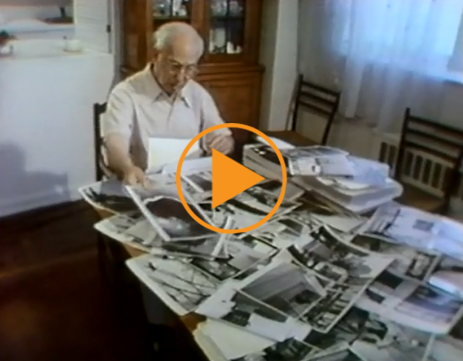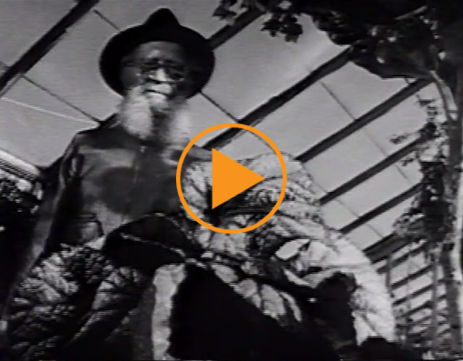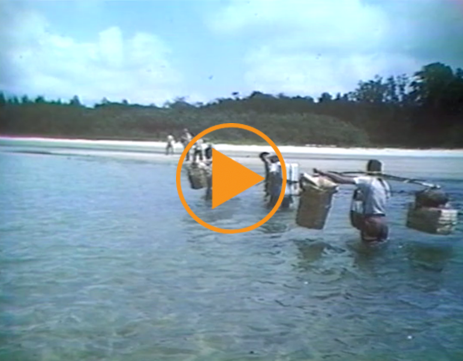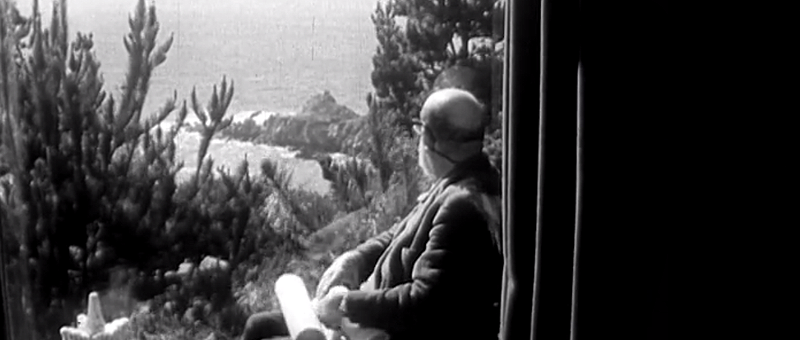
Fantastic Photographers – At work and on film
The Bridgeman Archive features work from many of history’s greatest photographers. However, a lesser-known fact is that the archive also contains footage of these greats at work and at home, directly in front of the camera – history on record. Today we’re looking at this footage and spotlighting iconic works from other photographers whose work is held in the archive.
Ansel Adams
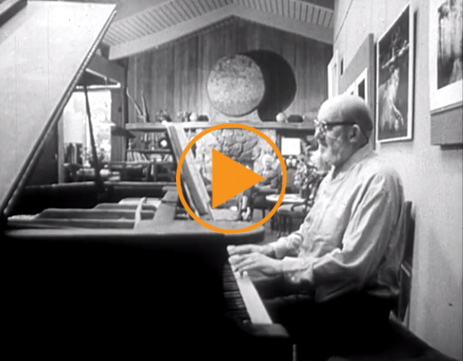
Photographer Ansel Adams working on location in California and at home, playing the piano and dining with his family. 1965 / Film Images / Bridgeman Images
These clips from 1965 show Ansel Adams (1902-1984) at home with his family, playing the piano and at work on location in California. A true master of his craft, Adams can be seen perilously balancing his equipment on rocks and plateaus to get the images he desired – some of which are then shown hanging on his walls at home. A rare glimpse of the process behind timeless images which are then shown in their final states.
Andre Kertesz
A profile of Andre Kertesz (1894-1945), the “father of 35mm photography,” 80 years old and living in New York (1978). He talks about his life and career and describes the genesis of some of his best known works, as well as the birth and growth of his career in New York. Several scenes show him at work in the streets of New York, and Kertesz speaks candidly about his method and emotional state throughout his career. Illustrated with many photographs and including narration from both Kertesz and the documentary narrator.
Edward Steichen
This profile of the great photographer Edward Steichen (1879-1973), was made toward the end of his life. This film reviews his life and many of his best known pictures. It was made at his home, and includes scenes showing him at work there with his huge view camera. It also includes his reminiscences about his work and aesthetic, and comments by his wife Johanna.
From the beginning of the century Steichen was an active proponent of the idea that photography was a fine art, and as director of the photography department of the Museum of Modern Art in New York City (1947-1962) he was responsible for “The Family of Man” exhibition, one of the most influential displays of photos ever mounted. 1964.
Eliot Elisofon
This film is an interview of LIFE Magazine photographer Eliot Elisofon (1911-1973) about a recent trip (1969) to the island of Java to photograph the extremely rare white rhinoceros. The discussion is illustrated by Elisofon’s pictures of preparation, equipment, getting to the remote location, setting up and manning the blind, wildlife, etc.
There is much talk of these topics, and also of magazine deadlines, working with native assistants, maintaining health in the tropics, and public interest in the rarely seen. Finally, there is a philosophical attitude toward the rhinoceros, which did not appear.
Eadweard Muybridge
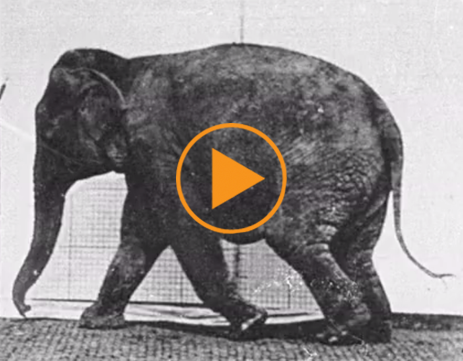
Animation of ‘Elephant walking’, plate 733 from ‘Animal Locomotion’, 1887, by Eadweard Muybridge / Bridgeman Images
Eadweard Muybridge (1830-1904) will forever remain one of photography’s cornerstone figures. His forays into photographic exploration of motion and picture projection form the foundations of film and photography as it is known today, and it is difficult to overstate his influence on future photographers. Muybridge’s most popular works captured individual frames of animals in motion. This stunning animation was created at Bridgeman using plates of Eadweard Muybridge’s ‘Elephant walking’, plate 733 from ‘Animal Locomotion’, 1887.
Damien Parer
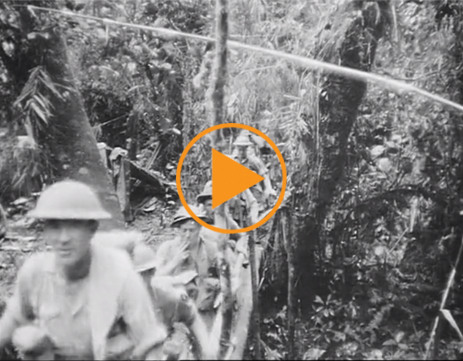
‘Kokoda Front Line’ (unedited) part 1 – Australian troops on the Kokoda Trail Campaign, WWII, 1942 / Australian War Memorial / Bridgeman Images
These incredible scenes were shot by Damien Parer, a daring photographer who lived and worked as a soldier whilst on the job as a photographer and cinematographer for the Australian Department of Information in World War Two. In this unique position, he was able to capture incredible scenes of men and conditions in which they lived and fought.
These particular scenes of 1942 Papa New Guinea during WW2 depict soldiers trekking through jungles, natives carrying injured men on stretchers and tender scenes of camaraderie. They were edited to make the award winning documentary film ‘Kokoda Front Line’ (1942). Unfortunately, there is obvious risk associated with documenting the real events of WW2 and Parer was shot down by Japanese machine gun fire while documenting a Marine advance at Peleliu, Pelau in 1944. His legacy lives on in these incredible images.
Find out more
Damien Parer in the archive: Discover more here
Find all these clips and more in the Photographer Footage Lightbox here

